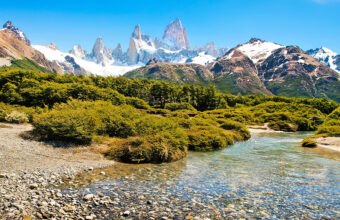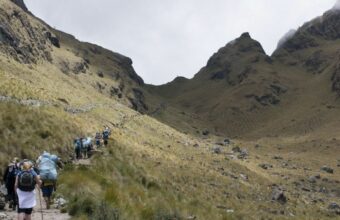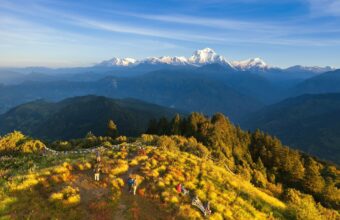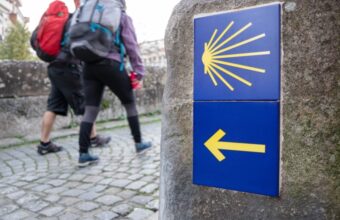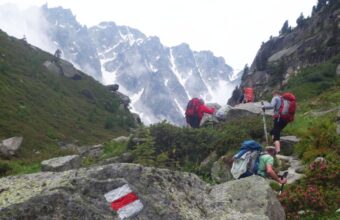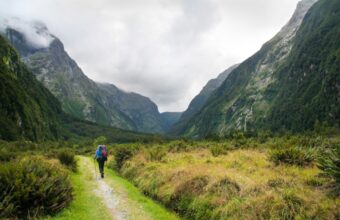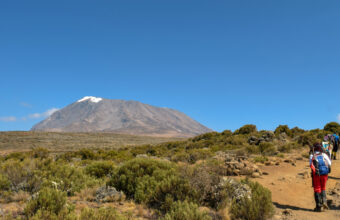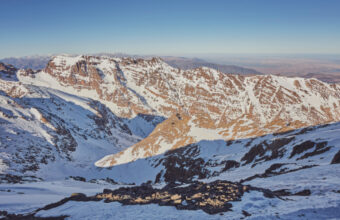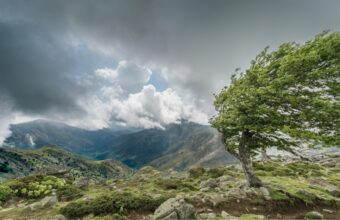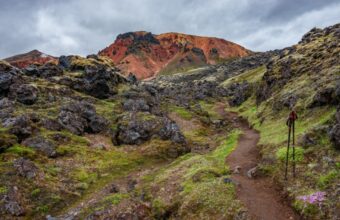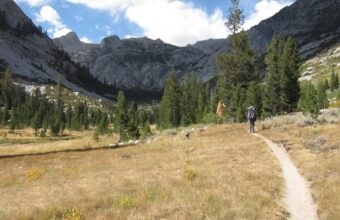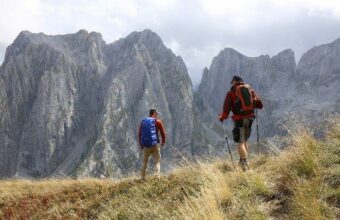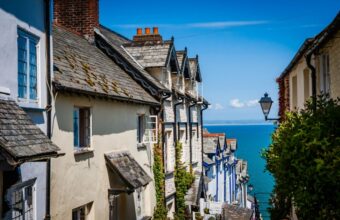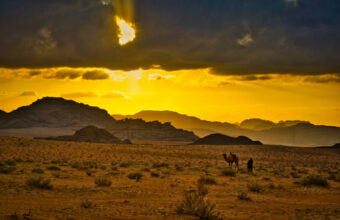Trekking, Hiking & Walking Holidays
An expert guide to exploring the world the slow way
I’m calling it: the age of fast-paced, tickbox, carbon intensive, hyper-commercialised tourism is no longer hip. Slow travel is the balm for our times, and trekking and walking holidays are as slow as it gets.
There’s something unique and evocative about travelling by foot, on a natural and human scale and unencumbered by timetables, schedules and itineraries. They say that the plane has made the world smaller, which must mean that hiking from place to place under your own steam makes the world infinitely larger. I know which one I prefer.
It’s also the most inclusive style of travel I can think of. You need no special equipment or skill, it’s (usually) affordable, it’s good for all ages, you don’t even need to be terribly fit – there are easy-going walking holidays virtually everywhere you look.
I’ve been trekking and hiking almost non-stop for most of the last ten years. This love affair with faraway landscapes and human connections has become my life’s work. Since 2016, I have trekked in four continents and 30 countries, writing about my adventures for some of the biggest publications and guidebooks in the English-speaking world.
In the following pages, my fellow travel journalists and I will explore some of the best treks, hikes and walking holidays on earth, along with our expert recommendations for planning your trip. Tighten up your laces, strap on your backpack and prepare to discover the understated thrill of slow travel.
The best places to go hiking and trekking
Our experts' top picks
Trying to choose the 'best' places to go hiking is a fool's errand. Nevertheless we asked our expert travel writers this impossible question – here are just a few of their favourites:

Chile
Chile
A country to which superlatives can do no justice, Chile is probably my favourite place on earth for hiking and trekking.
With virtually all the world's landscapes packed into one slender stretch of land, the scenery oscillates between arid desert, tropical islands, and piercing mountains, volcanoes and glacial lakes; of which a whopping 21% is protected by law.
This is truly a trekking and walking paradise.

Nepal
Nepal
Home to Mount Everest and more than half of the planet’s other 8,000m-plus mountains, Nepal stakes a strong claim as the trekking capital of the world. Most visitors flock to the Everest and Annapurna regions, but there's so much more to the Nepal experience.

Peru
Peru
Peru is another trekking heavyweight that is dominated by just one or two tourist hotspots: Machu Picchu and the Inca Trail. Both deserve their fame, but if you're looking for quieter alternatives there are treasures to be found further afield.

Tyrol Mountains
Austrian Tyrol
If you’re looking for classic Alpine scenery but have already had your fill of the more famous French and Swiss Alps (or just prefer somewhere a little less popular) then I think the Tyrol mountains may be for you.

Kyrgyzstan
Kyrgyzstan
I’ve been based in Kyrgyzstan off and on since 2012, hiked in every oblast of the country except Batken, and travelled several times to the remotest corners of the state. Yet still after all this time I feel like I’ve only scratched the surface of Kyrgystan’s trekking potential. Every other valley seems at times to be capped by some glacier or waterfall, not to mention the nearly 2,000 alpine lakes scattered across the country. Even after all these years I feel like I could devote every summer of the rest of my life to hiking here and still not see it all.

Morocco
Morocco
From the base of a towering Saharan sand dune to the peak of Northern Africa atop Mount Toubkal, Morocco offers a surprising variety of treks and hikes. With close-contact cultural interaction in the rural villages that dot this deeply hospitable land, this is one of my absolute favourite places to explore by foot. The best-known (and heavily marketed) treks are indeed spectacular and certainly deserve the crowds they attract. But some of my favourite Morocco hiking experiences are in areas that see far fewer visitors, with landscapes that are every bit as impressive.

Bhutan
Bhutan
Bhutan offers the kind of Himalayan trekking that few know about. It has all the huge snow-capped peaks you'd expect along the border with Tibet, plus plenty of epic high passes, glittering turquoise glacial lakes and even the occasional snow leopard.
The world's best treks & walking holidays
Deservedly popular, but expect crowds
Best is subjective. Here are a smattering of the world's most popular treks and walking holidays. So long as you don't mind sharing the views you'll be happy with any of the following:
-
Torres del Paine National Park
-
Inca Trail
-
Annapurna Region
-
Santiago de Compostela
-
Switzerland
-
New Zealand
-
Mt. Kilimanjaro
-
Toubkal National Park
-
Corsica
-
Iceland
-
California
-
Balkans
-
South West
-
Wadi Rum
Trekking & walking holidays
Everything you wish you'd known before you booked
What’s the difference between trekking, hiking and walking holidays?
The travel industry likes its jargon and labels, and even something as simple as walking from A to B isn’t immune. Here’s a breakdown on what the different labels mean, and how different trip types are typically marketed:
Hiking is fairly self-explanatory; this is usually a vigorous walk somewhere outdoors where the walking itself is the point of the activity. The “hiking” label is normally applied to a single day activity and your overall trip might consist of one or more day hikes, interspersed with other activities. This is sometimes included in the “adventure travel” category but it’s often fairly easy-going.
When travel companies talk about “trekking” they usually mean multi-day trips, where you’re moving from place to place by foot. In other words, several days of hiking stitched together into a longer-distance journey. This involves more operational logistics such as overnight accommodation (camping, walking huts, or hotels), meals, potentially porters, and transport to/from the start and finish points.
(Trekking becomes mountaineering when it involves some technical climbing skill and equipment, and it becomes backpacking when you’re self-supported and carrying all your own gear.)
“Walking holidays” are somewhere between the two, and can take different formats. A centre-based walking holiday simply means staying in fixed locations and doing different day hikes. An inn-to-inn or long-distance walking holiday means hiking from place to place and staying in different accommodation each night. It usually includes baggage transfer so you don’t need to carry your main luggage with you each day. When a trip is sold as a “walking holiday” rather than a “trek” it will typically (but not always!) be easier-going, more accessible, and have more options to be customised.
Complicating matters further, different parts of the world tend to use different labels, and it often boils down to how “exotic” (a term we don’t really like) the destination appears to Western travellers. You’re more likely to do a walking holiday in the UK or Europe, and a trek in Nepal or Peru. Make of that what you will.
What are the main difficulty and ability levels?
There’s no universal standard, as conditions vary so widely from place to place. For the purposes of our guides, we try to stick to the following categories: easy, mild, moderate, and strenuous. What that means in each location will vary. An “easy” trek in Nepal might be harder than the most “strenuous” walking holiday in England.
Variables include the elevation gain (daily or overall), the overall distance covered, the daily distances, the duration (in hours or days), likely weather conditions and the altitude. Good trekking companies don’t want you having a bad time – or worse, getting hurt – so they’ll give you good advice on what’s suitable for you and your group.
What is a self guided walking holiday?
You’re probably more familiar with the traditional guided tour, where you’re escorted by a tour leader either in your own private party or in a small group of fellow travellers assembled by the tour operator. Most trekking tours are organised along these lines, particularly in major trekking destinations such as Nepal, Peru, Morocco and so on.
But in other parts of the world, notably in the UK and Europe, organised “self guided” walking holidays are more common. This is where a travel company will plan your itinerary, organise your accommodation and daily baggage transfer, provide you with maps and route notes, and leave you to your own devices. It’s popular in Europe because travel and communication is generally easier, the footpaths are well mapped and waymarked, and it’s usually much cheaper than a fully guided tour.
If you don’t fancy that level of independence you can of course find plenty of guided walking holidays in the UK and Europe, although at significantly higher cost.
What special equipment will I need?
Despite what the outdoors retailers would have you believe, aside from some good footwear, a backpack, and weather-appropriate clothing, there’s no special equipment required for a trekking or walking holiday.
For mountain hiking, boots with ankle support and rugged soles are required. Leather is better than fabric in these conditions, although they need plenty of wearing-in before you depart. Fabric boots are fine for lower-level or warm-weather walks preferably with a Gore-Tex or similar breathable waterproof lining. Good socks are also essential: merino wool is best, for socks as well as T-shirt base layers, reducing odour and remaining comfortable and warm when wet.
If you’re carrying your own luggage between overnight stops, choose a hiking-specific rucksack with good hip and shoulder support. If you’re on a supported trek that includes luggage transfers, take a soft-sided duffle bag and a 30–35L daypack. Whichever backpack you choose, ensure it takes a hydration bladder – on most trails you’ll drink at least 2L of water each day. A water filter or purification tablets is useful for filling bottles from mountain streams.
Lightweight, adjustable, packable walking poles are handy, particularly if you’re carrying a large pack or undertaking steep or extended descents; flick-lock extension systems tend to be more robust than twist-lock. A breathable waterproof jacket is essential in most destinations, particularly in mountain regions where weather can change rapidly, along with a hat, sunglasses, sunscreen and a basic first-aid kit for treating blisters, cuts, sprains and stings.
Pro Tip
The dreaded blister can seriously ruin your walking holiday. A tried and tested method to avoid them is to rub some Vaseline onto your feet each morning, especially between the toes!

